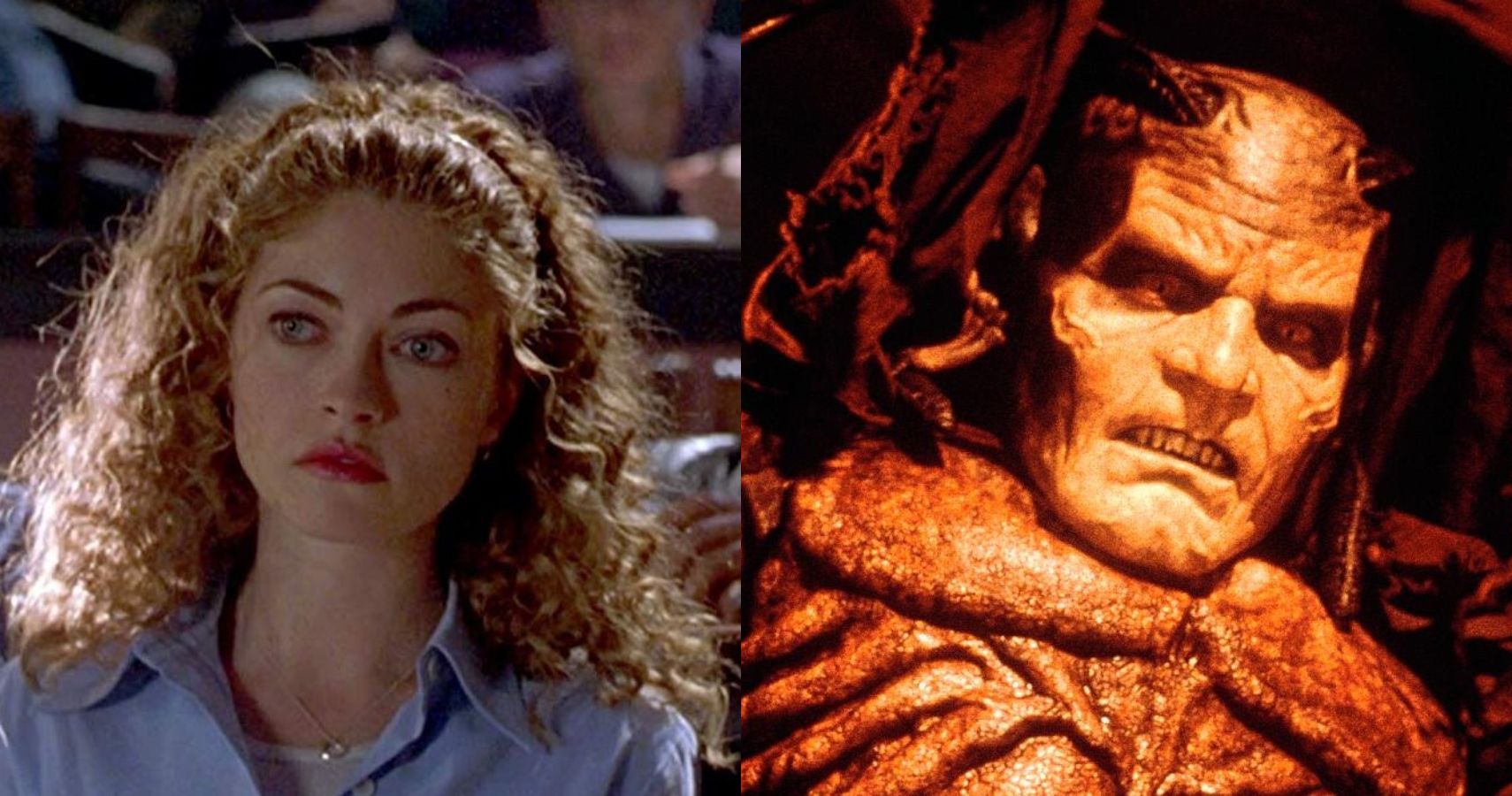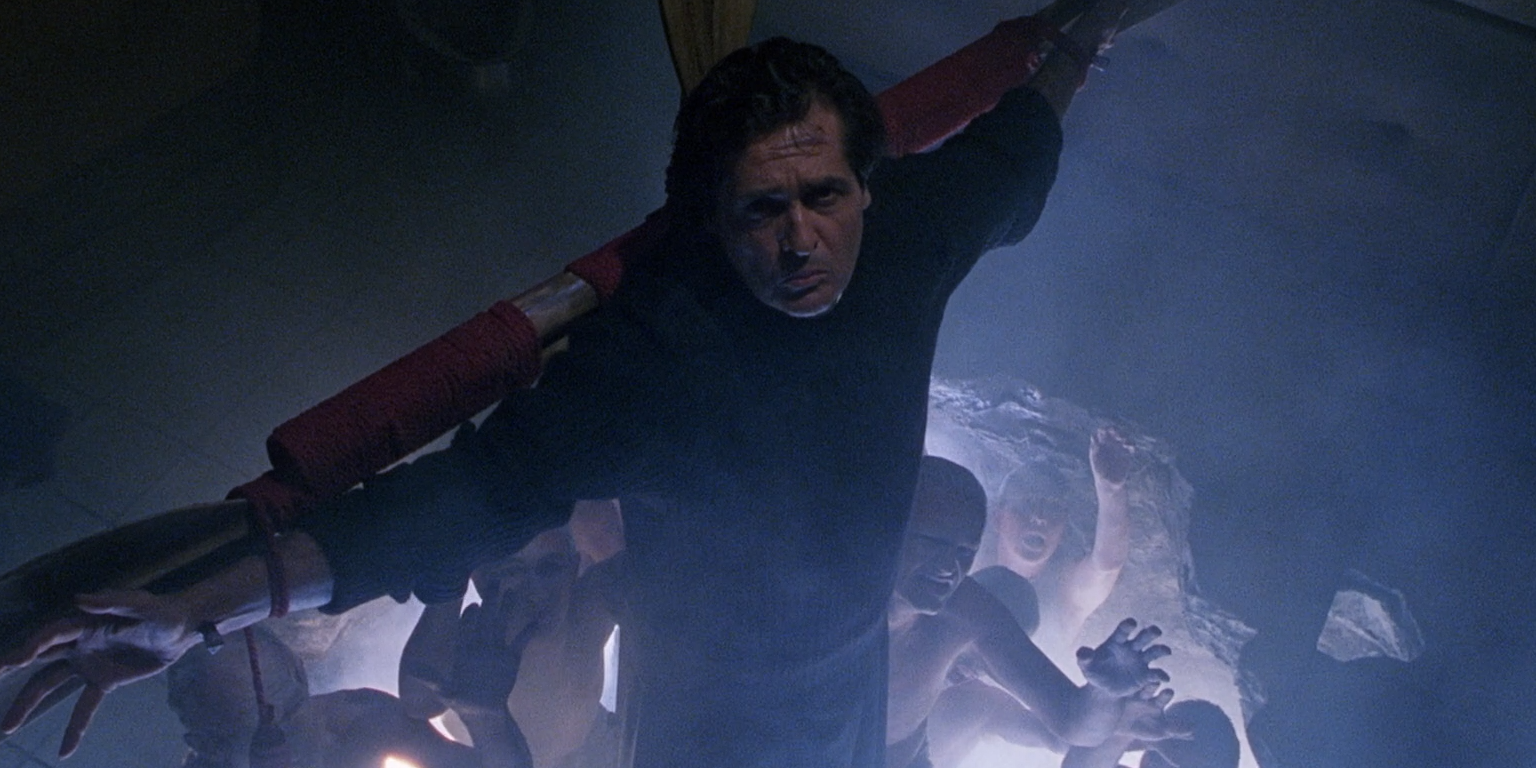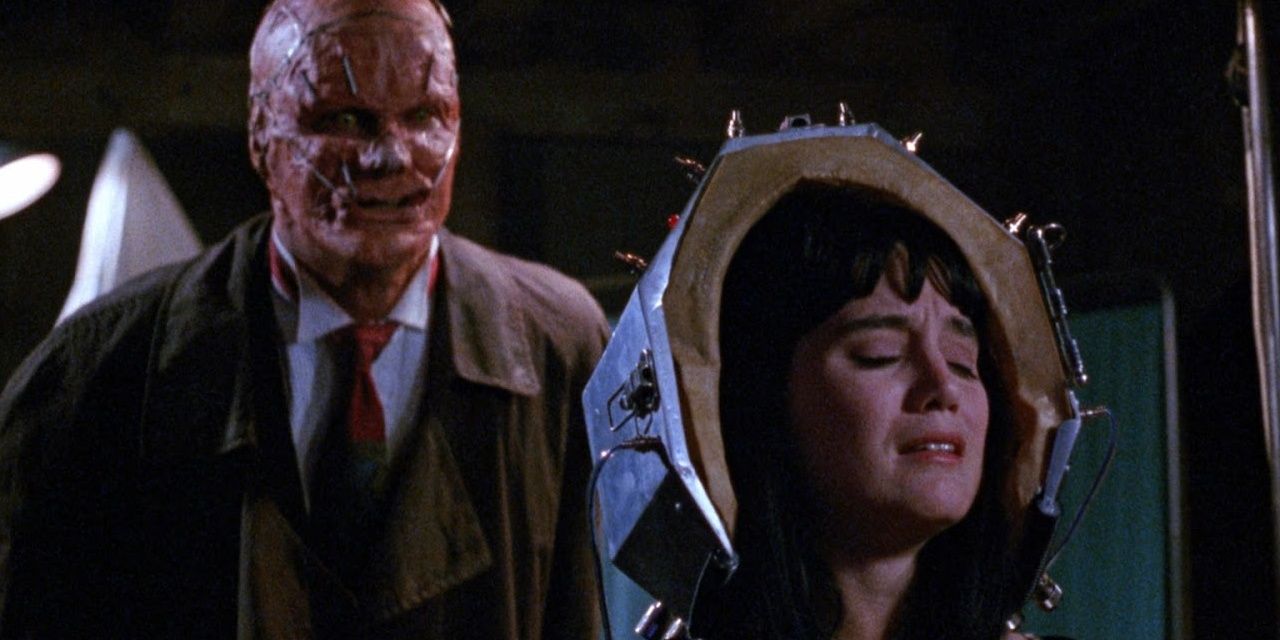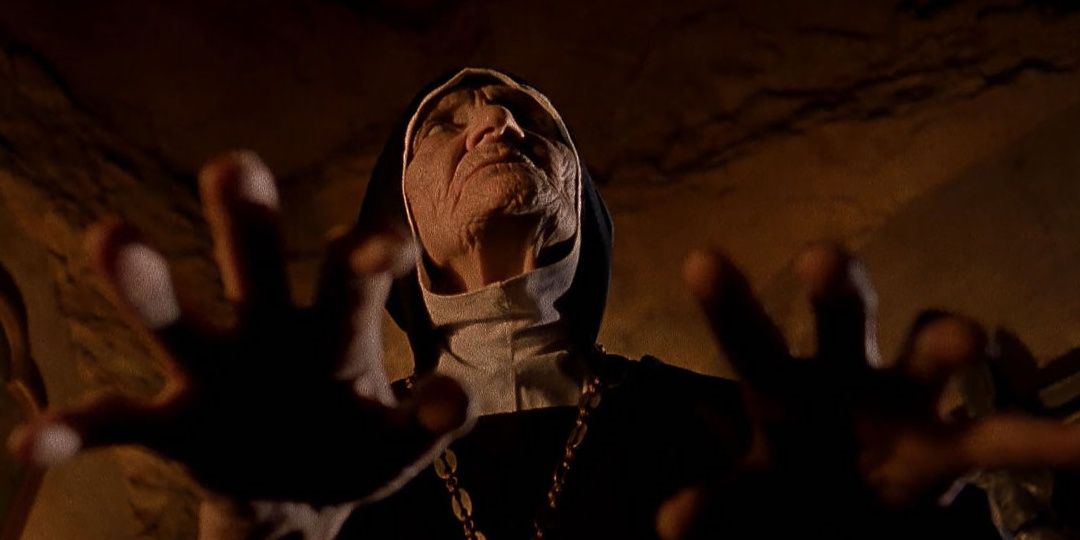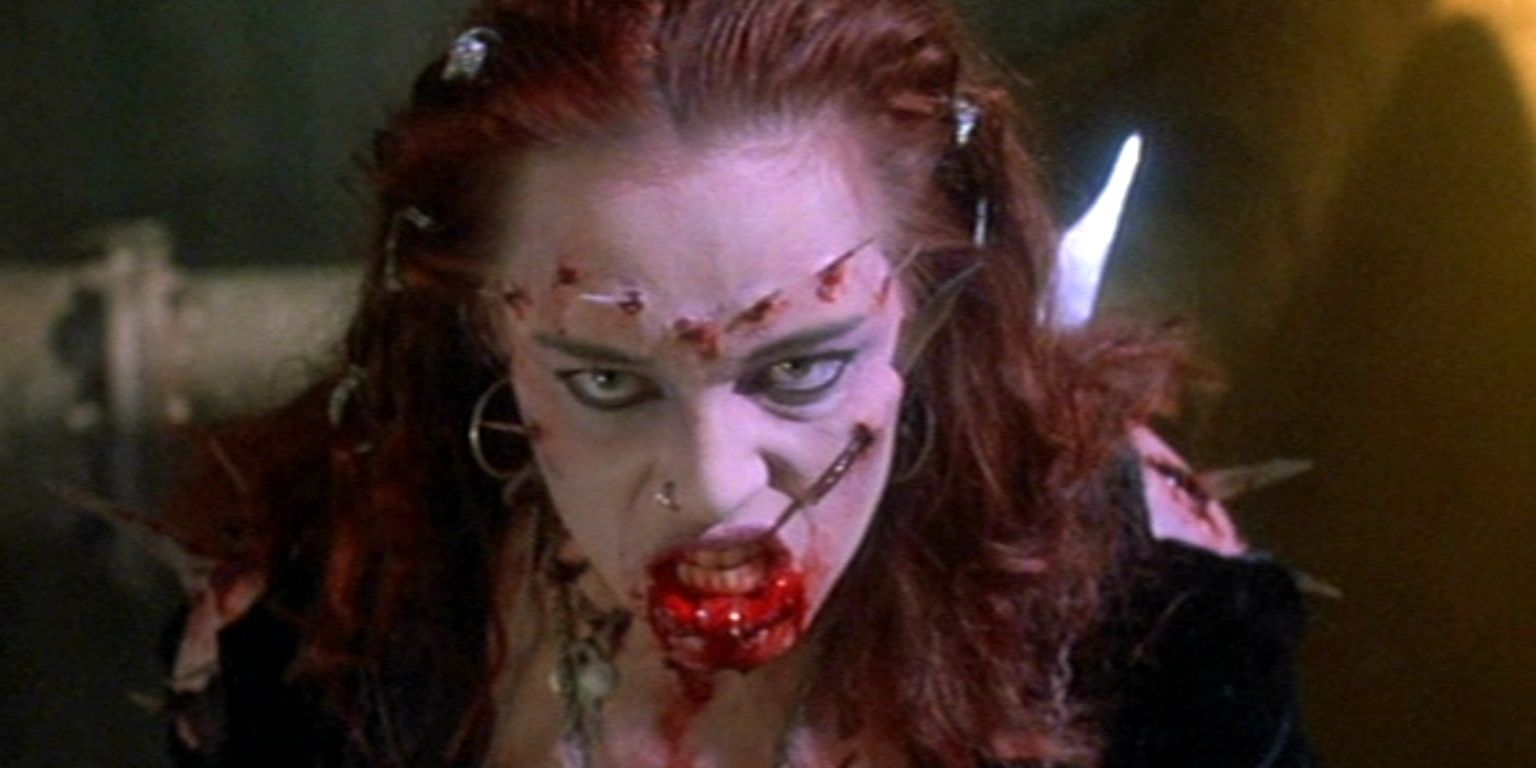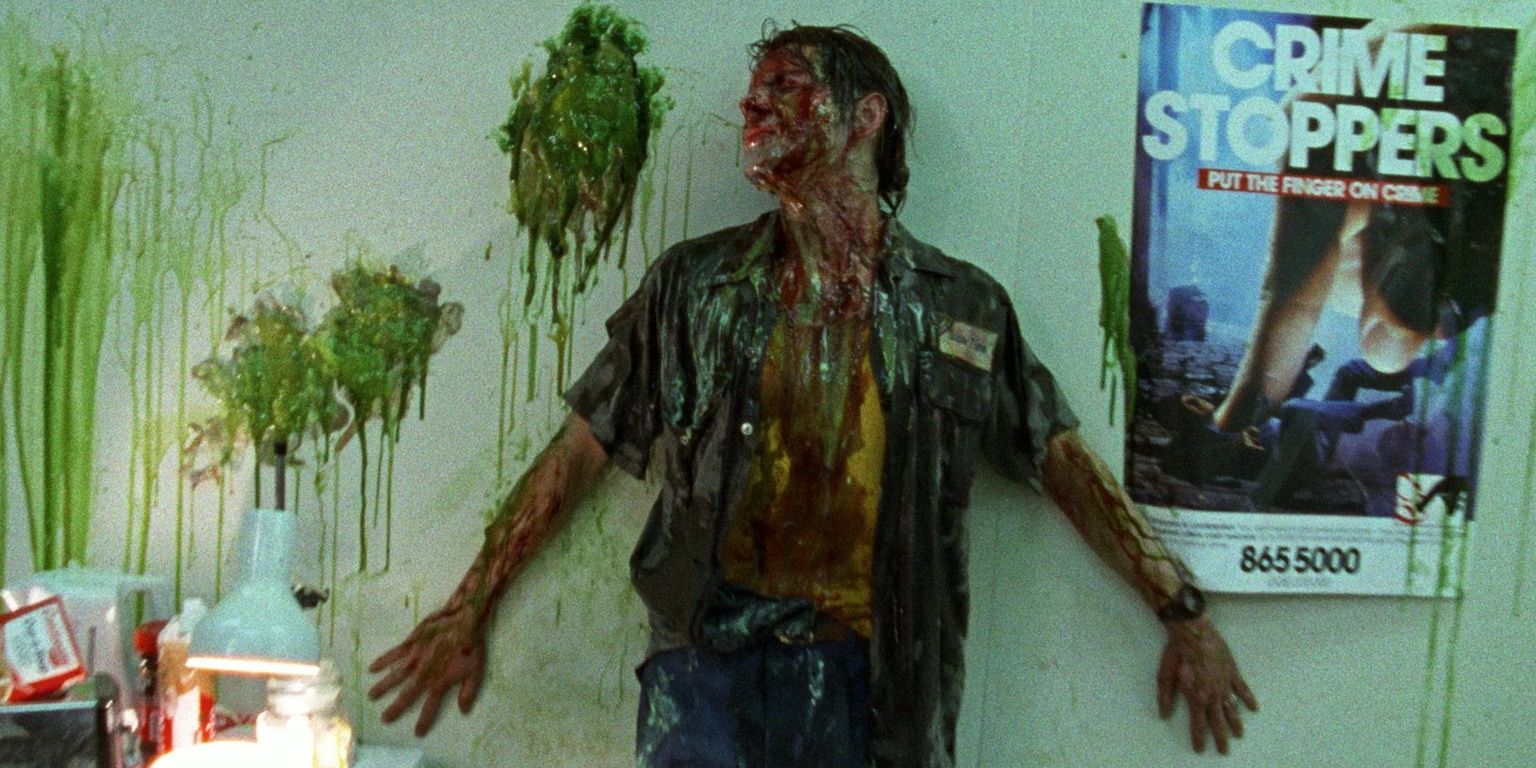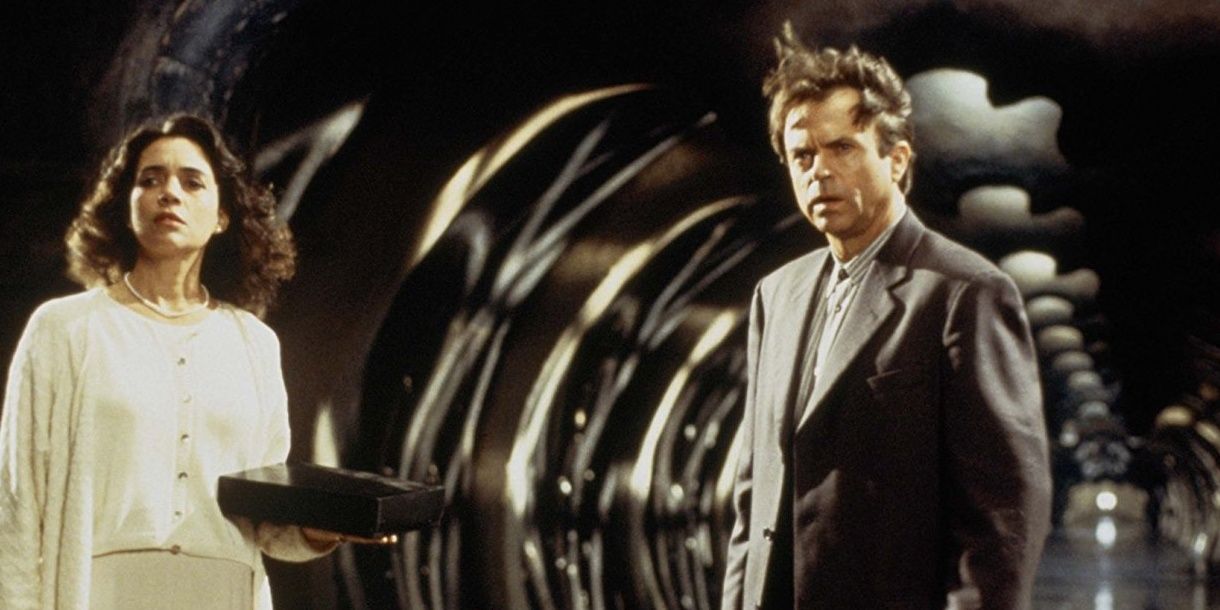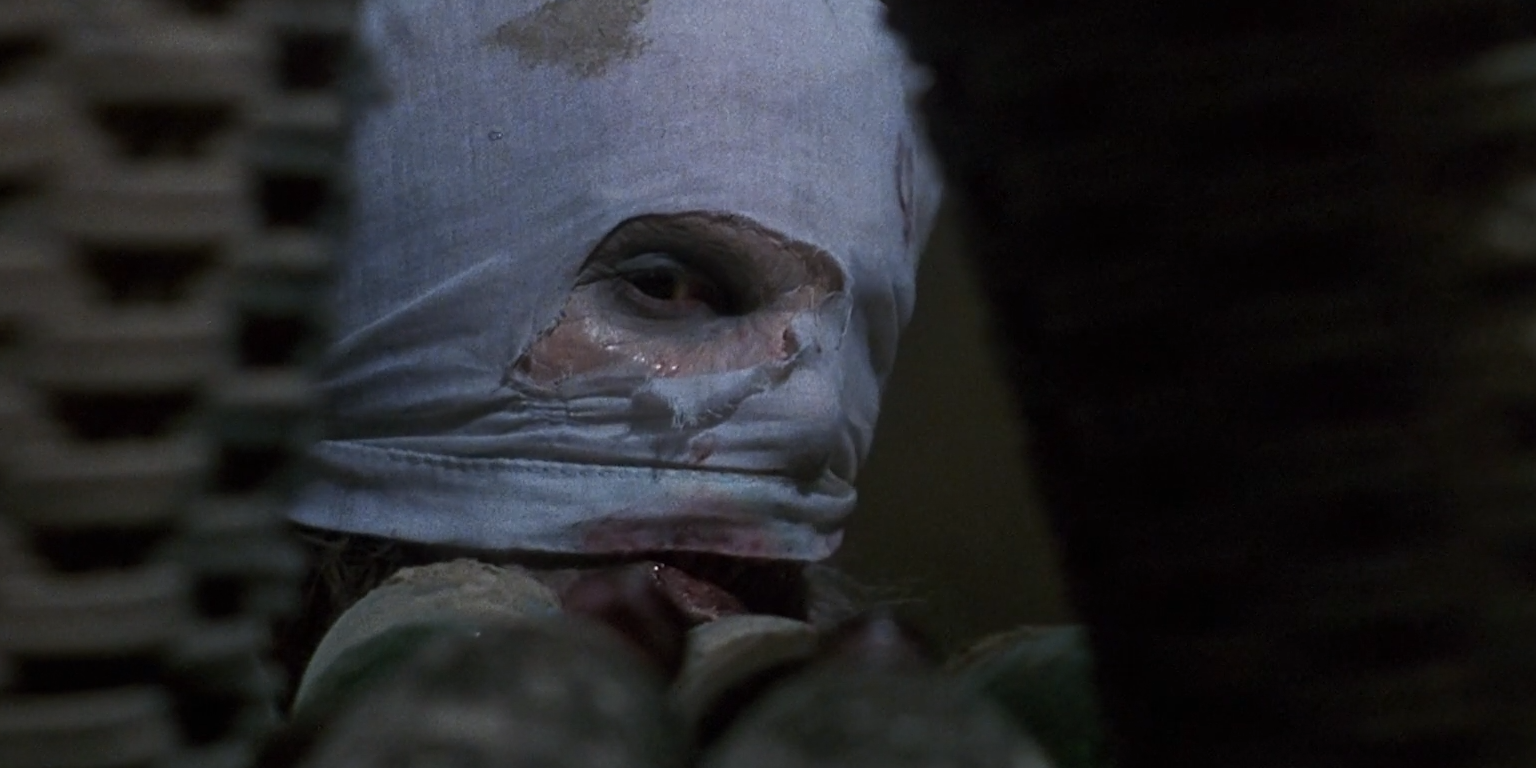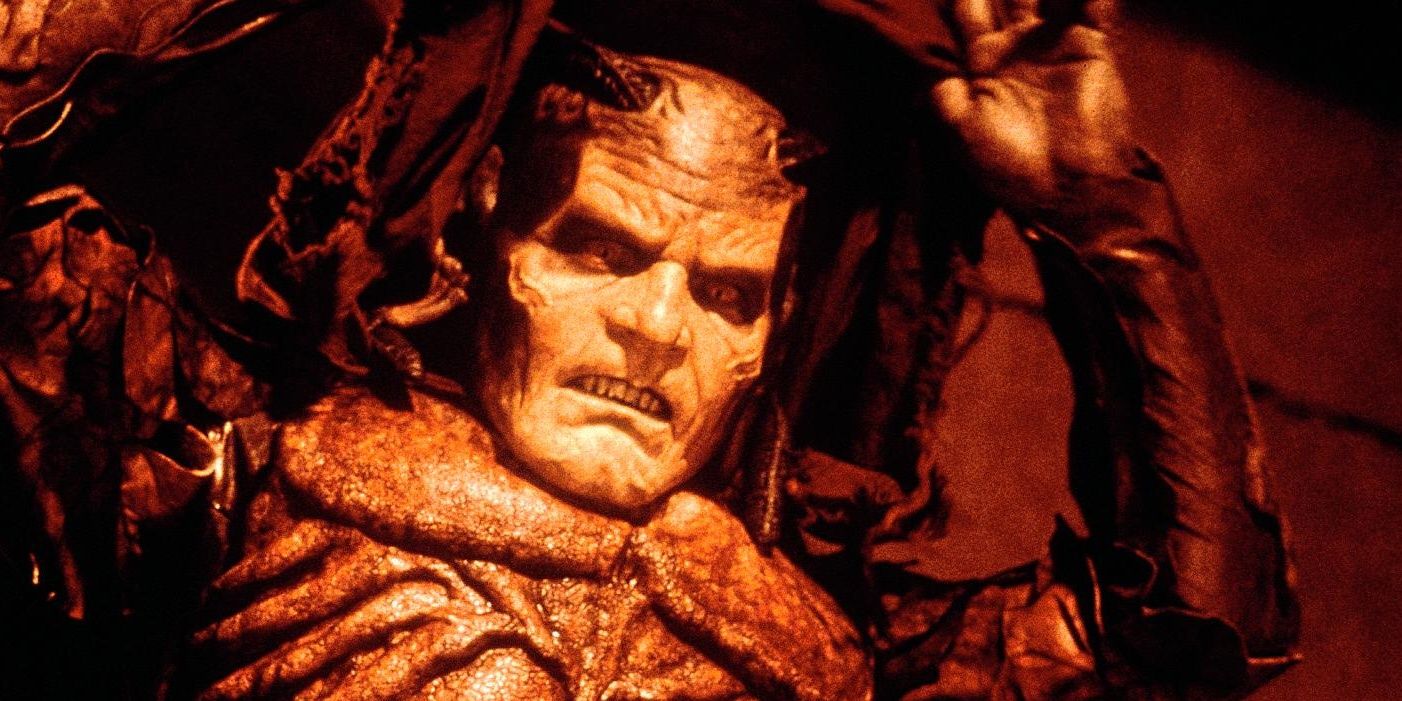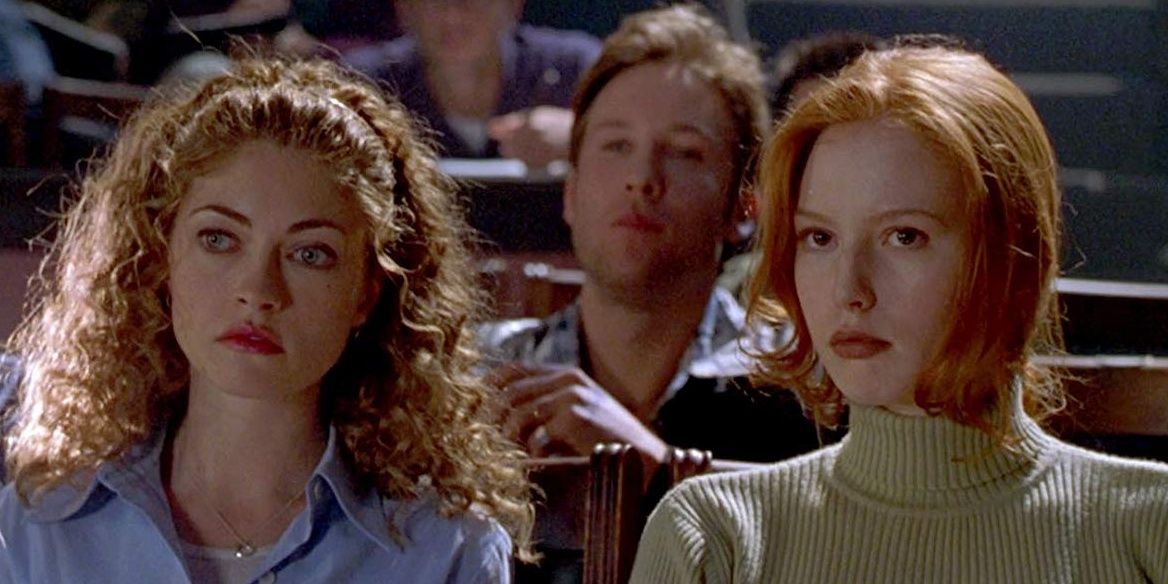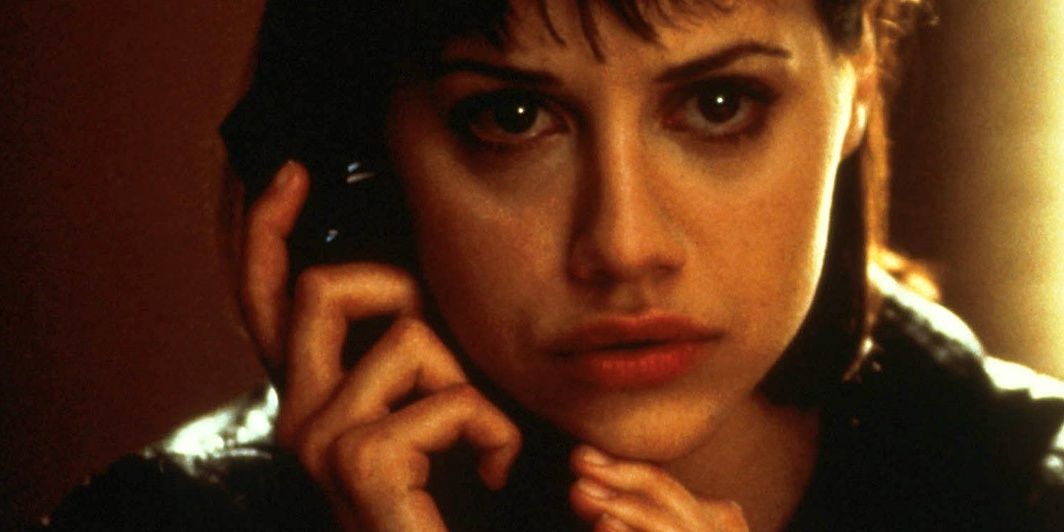Despite the Scream series' cultural dominance of the decade, the 90s is frequently cited as a dead-zone for horror. After the genre's second golden era during the Reagan years, Wes Craven and Kevin Williamson gave it a self-reflexive shot in the arm, reviving the slasher with renewed sass and vigor that would last into the new millennium.
Off the cinematic beaten path, however, there were interesting films being made that had no desire to cash-in on the current mania for all things quippy and self-aware, and while these films didn't translate to big box office numbers, they mark the decade's horror output as something more interesting than is often remembered. Below are ten of the most underrated horror films of the 90s.
The Exorcist III (1990)
One of only two times that The Exorcist author William Peter Blatty took the director’s chair for a spin, The Exorcist III, based on his own novel, Legion, is one of the great misunderstood sequels of all time. Coming as it did after John Boorman’s catastrophic Exorcist II: The Heretic, audiences were none-too-eager to return to this world of possessed pre-teens and Middle-Eastern demons. The Exorcist III, however, is the rare sequel that pays respect to what came before while charting its own course.
Whereas Friedkin's original film is grounded, Blatty goes full-on Grand Guignol with a tale of ritualistic killings under investigation by a note-perfect George C. Scott. A worthy follow-up to a bonafide classic, The Exorcist III boldly does its own thing and deserves to be celebrated for it.
Popcorn (1991)
A late-stage slasher for film lovers, Popcorn is one of those films that proves the genre was slowly gaining self-awareness even before Wes Craven was up-to-bat.
Starring frequent final girl Jill Schoelen as a teen organizing an all-night classic horror marathon at her local cinema, Popcorn re-mixes Phantom of The Opera with Lamberto Bava’s Demons for a theatrical slasher that celebrates tropes with its tongue firmly planted in cheek.
Dark Waters (1993)
The ignominious subgenre of grindhouse film known as nunsploitation hit its peak in the 1970s, but leave it to Italian director Mariano Baino to best what his own countrymen were doing two decades previous in this sumptuous visual masterpiece. When Elizabeth (Louise Salter) journey to a remote convent the holds secrets surrounding her birth, she joins with a young novitiate, Sarah (Venera Simmons) to uncover the truth of her mysterious parentage.
Light on plot but high on its own hellish style, the convent is a thing of overwhelming expressionistic terror where nuns march around with burning crosses and a blind, clairvoyant abbess paints bloodcurdling murals of future horrors. Some viewers may find Dark Waters soporific and Baino avoids easy explanations for the bizarre happenings, but its sense of cosmic unknowability is its power, melding nunsploitation and Lovecraft into an alluringly perverse trip into a cosmic netherworld.
Return of The Living Dead 3 (1993)
Return of The Living Dead is one of the best-loved horror comedies of all time, so one could be forgiven for turning one’s nose up at its been-there-done-that follow up, Return of the Living Dead Part II or Brian Yuzna’s threequel, which is a far cry from the source material. But, it must be said, this romantic drama in which a mourning teen (J. Trevor Edmond) uses the series’ favorite chemical, Trioxin 245 to revive his dead girlfriend (Melinda Clarke), is a uniquely compelling and effective subversion of the zombie film formula.
The film's oh-so-90s preoccupation with self-harm and extreme body modding make it an interesting curio, and it branded Clarke’s heavily-pierced visage onto the brains of countless teenagers, making her an icon for the video store era. A flawed film with a pulsing heart beneath, Return of The Living Dead III is the alternative zombified grunge-rock Romeo and Juliet you never knew you needed.
Body Melt (1993)
When the denizens of the peaceful housing development Pebbles Court are exposed to the newest health supplement, their bodies start to break down in increasingly vile and shocking ways. This delightfully dated Aussie-import uses its hare-brained, woefully 90s health craze “satire” as an excuse to show off a bevy of eye-poppingly gross practical effects setpieces.
Supposedly, director Philip Brophy originally conceived the project as an anthology, explaining the vignette-like structure of the film, but its a perversely charming, uber-campy body-horror opus that must be seen to be believed
In The Mouth of Madness (1994)
John Carpenter is one of the genres unassailable artists, but few would consider his post-80s output worth writing home about. Still, there are some gems to be found, and In The Mouth of Madness is one of his finest hours as a filmmaker that’s only now coming to be appreciated for its ambition and intelligence.
Starring Sam Neill as an investigator on the trail of “Sutter Cane” a popular horror novelist whose literary creations seem to be coming to life, Carpenter deftly blurs the line between fact, fiction, fantasy and reality in this journey into the mind of the mad artist. A meditation on the creative process and the artist’s ability to shape the world around him, In The Mouth of Madness is an effects-driven mind-bender from one of the genres greatest filmmakers.
Castle Freak (1995)
Charles Band’s Full Moon label is synonymous with the cut-rate turkeys it floods the VHS market with, but occasionally he strikes something nearing gold, as with Stuart Gordon’s Castle Freak. Loosely-based upon a short story by H.P. Lovecraft, the film stars genre fixtures Jeffrey Combs and Barbara Crampton as an All-American couple beset by tragedy who inherit a drafty Italian castle which holds a dark secret.
Gordon, a horror maverick with classics like Re-Animator and From Beyond under his belt, brings his usual flair to this grotesque tale of buried secrets and dungeon-dwelling monsters, and though it was dropped direct-to-video without any fanfare, Castle Freak remains one of the unsung jewels in his filmography.
Wishmaster (1997)
Though this film was executive produced by Wes Craven and came after Scream, it's largely a throwback affair. This is fitting, as it was directed by Robert Kurtzman, most famous for his effects work. Telling the story of a monstrous Djinn who grants wishes that end badly for those that make them, Wishmaster is a wild special effects showcase featuring cameos by countless horror icons from days gone by.
Turning very little profit and largely panned by critics, Wishmaster was met with a shrug upon release by a culture more turned on by snappy modern dialogue than old-fashioned, effects-driven thrills. Luckily, the film has aged into itself and can now be appreciated on its own merits as a valentine to the genre and its fans.
Urban Legend (1998)
Post-Scream slashers were like cockroaches in the 90s, but few are as distinctive or fun as Jamie Blanks’ Urban Legend. Blanks became attached to the project when, as a young film student, he cut together a stylish trailer for the then-in-production I Know What You Did Last Summer (itself a film made to capitalize on the current taste for Scream-style snarkitude). He missed the boat on that one, but was offered Urban Legend instead, and the rest is post-modern slasher history.
The concept of an urban legend obsessed, ski-jacket wearing killer picking off college co-eds (including Alicia Witt, Rebecca Gayheart, Joshua Jackson, and a fresh-faced Jared Leto) doesn’t really work. Silvio Horta’s script has trouble defining which legends he’s using, and some of the setpieces inspired by them are real stretches, but Blanks brings a real visual gravitas to the whole thing, making Urban Legend, if not the most coherent of the 90s teen slashers, at least the most visually accomplished.
Cherry Falls (2000)
Though it's frequently lumped in with the rest of the 90s teen slasher flicks, Geoffrey Wright’s Cherry Falls is a far stranger film than its given credit for. Released in 2000, but filmed prior to the new millennium, its plot, in which a mysterious killer murders teens who haven’t yet lost their virginity, rests on a trope inversion that would make Kevin Williamson proud, but the movie itself feels more indebted to Italian Giallo features and the Twin Peaks television series than Scream.
The fact that it made censors so uncomfortable that they opted to release it as a heavily-excised TV movie and stars the late Brittany Murphy just adds to the mythos of an offbeat film that has "cult" written all over it.

